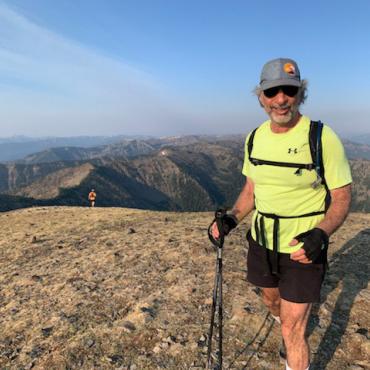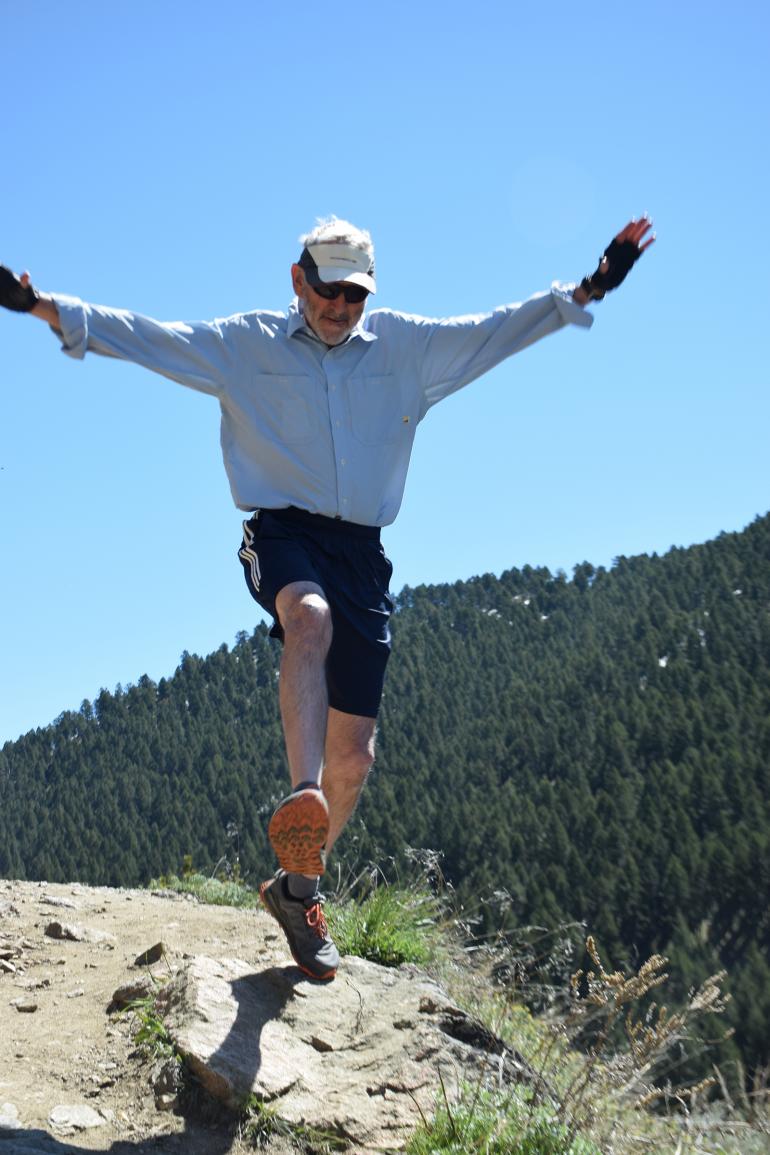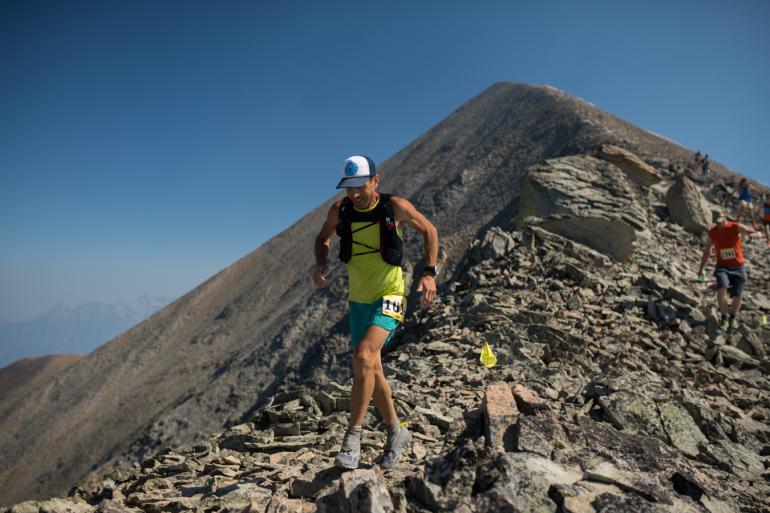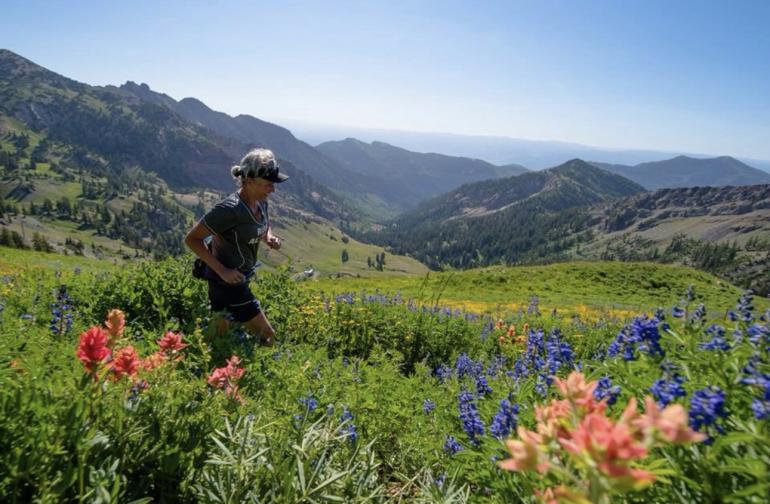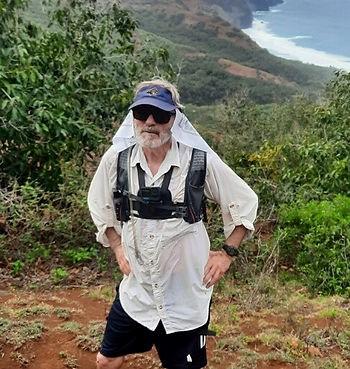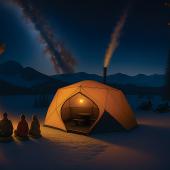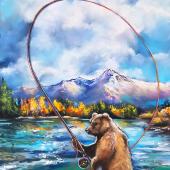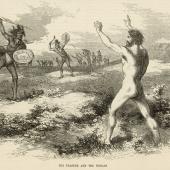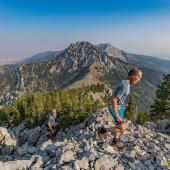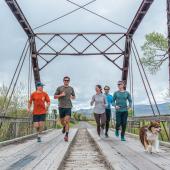It’s Not About the Run
The mindset behind older trail racers.
Those who line up at one of the many trail races around here will notice the crowd of 20-, 30-, 40-, and even 50-year-olds milling about at the start. As you continue to scan the crowd, you may notice a few older grey-haired participants mixed in. Be aware, some of these grey-hairs may kick your butt.
Bozeman is a mountain community with lots of folks of all ages out on the trails. Midweek in winter, at lunch time, the sea of grey can give Bridger Bowl’s Deer Park Chalet the look of an old age home. When it comes to trail races, however, the number of older participants dwindles to a precious few. Two of the more challenging races in the valley are the Old Gabe 30K/50K and the Ridge Run, both of which are put on by the Big Sky Wind Drinkers. I interviewed four 60-plus year-old racers who participated in at least one of these races in 2023. These are their stories.
When the runners get down to training for races, their approaches couldn’t be more different.
The runners and their ages as of last summer, are Mike Carey, 63; John Fiore, 61; Annie Ley, 64; and Jim Squyres, 72. I asked them all a set of questions. Lots of background stuff like how long have you been running and tell me about your training, but my interest was really to gain insight into what keeps them going long after most of their contemporaries have yielded to the diminishing effects of age. Health issues were also of interest; we all wear out as we age, what do they do to that makes them able to keep “Getting after it,” one of Annie’s expressions that captures her spirit.
The interviews showed a surprising amount of variation in answers to every question I asked. Annie is the only lifetime runner. Having grown up in Eugene, running was a big part of her youth and the local culture. John was a successful cyclist who made the 1988 Olympic B Team, but came up short in qualifying for the Tour of Guadalupe and started to rethink his career choice. Mike started off as a basketball player, and Jim did desert motorcycle races. Mike started running when he met his wife in his mid 20s, John started in his 30s, but Jim stands out here for starting to run late in life—his first ever race was the Ridge Run in 2022.
Winter is backcountry ski season for John and Mike, though with the lack of snow, John spent the early part of winter running 40-50 miles per week, while itching to make use of his skins. Annie, is a wannabe snowbird and a winter gym rat; sometimes she sets the treadmill on 15 and just suffers; horrendous vertical seems to spark her enthusiasm. Jim’s a snowbird, I caught up with him in Kauai as he was preparing to run the 22-mile Kalalau Trail on the Napali Coast.
When they do get down to training for races, their approaches couldn’t be more different. John very systematically puts down a steady stream of miles every week, Mike mixes running and mountain biking, limiting himself to two runs per week to limit the impacts running has on his body. Annie, travels the world, picks a bucket-list destination and finds runs to do; she spent the first three days of February running across the Baja Peninsula. In May she went to Norway for a four-day run through the Lofoten Islands. For her, running trips are a great way to meet people and explore the world. Jim’s training consists mostly of running as fast as he can up Sypes Canyon five days a week. Sometimes he races up the first two miles, other times he goes as far as the foothills trail intersection, still other times, he crests Baldy.
Though all of these aging athletes are still getting after it, they recognize that time is taking its toll.
For all of them, the “why” has to do with being outside in our beautiful world. John frequently heads north, and thrills to 30-40 mile runs in the Missions, the Bitterroots, Rattlesnake Wilderness, and the Bob. Often he’s alone. He makes as much noise as he can but still sees bears, and notes that hearing a wolf howl while deep in the Rattlesnake is something he will never forget. Mike is almost always alone and thrills to the beauty of early mornings in our local backcountry. To him, running is a form of meditation. Annie recognizes that she is in the last third of her life, “keeping after it” while meeting people is the way she wants to spend her recreational time. “It’s not about the run,” is one of her expressions, it gives insight into why she is out there.
John races a lot and includes ultras on his calendar; the Ridge Run is hands down his favorite race. He does most of his racing in and around Bozeman. After winning his age group in the Old Gabe 30K and the Ridge Run last year, he ran the Rut Trifecta, winning the Vertical Kilometer, the 28K, and falling short in the 50K by less than 2 minutes. Mike often follows John in the 60-69 age group, while Annie and Jim stand alone as finishers in their age groups. Annie is running a 60K this summer. It’s the longest race she has ever attempted.
Though all of these aging athletes are still getting after it, they recognize that time is taking its toll. None of them are as fast as they used to be, but as Jim puts it, being sedentary is bad for a lot of things. In Annie’s words, “The struggle is real.” To John, challenging himself is in his blood, it’s why he lives here. Maybe Mike said it most simply, “Use it or lose it.”
Three of them, John, Mike and Annie do not have any serious health issues. John is a Physical Therapist who seems in tune with what his body needs; he knows when to take time off from running and mix in biking and weightlifting. Mike likewise does daily yoga, weight training and whatever PT is recommended. Annie, a nurse, doesn’t do much of anything before she runs, which “Works for me.” Jim ran his first Ridge Run after prostate cancer in 2019, has herniated disks that hark back to his desert racing days, and a recent hernia operation, yet he seems unstoppable.
Collectively, my interviews showed me that there is no one recipe for keeping after it.
In the sense of health issues, Jim is the most relatable of the group. Most folks, by the time they pass 60, suffer from one or more ailments. Jim shows how it is possible to push through. “Racing is living,” was a thought he offered. Jim doesn’t race because it is easy; the desire is there; he finds a way.
Collectively, my interviews showed me that there is no one recipe for keeping after it. None of these runners are tied to a particular training regimen, none of them are intensely focused on the reports generated by their sports watches—heck Annie doesn’t even own a sports watch and Mike doesn’t own a watch, period. Their approaches are, perhaps, a bit old school, but they’ve each found an approach that works for them. And they’re still out there.
In John’s words, “Chronological age doesn’t define you as a person or an athlete. You don’t have to be a high-level athlete to be healthy as you get older. Fitness and health are accessible to everyone.”
Mountain towns draw these runners in; cultivate them; and a few are still left standing as they get older.
How unique is this group, is a question I considered while conducting these interviews. I researched it by looking for 60-plus finishers in the 2023 Rut Runs, Hardrock 100 and Western States 100. These are big races, and if there is large body of serious, 60-plus trail racers out there, I might expect to find them in these races. Sure, there were a few finishers in each of these races, but the pickings were about as slim as they are here in Bozeman.
Many of the 60-plus finishers in all these races were from mountain towns, as mountain towns attract folks who are interested in this sort of challenge. The towns draw them in, cultivate them, and a few are still left standing as they get older. More runners can continue to race as they age into their 60s and beyond. As these stories show it takes desire, but there is no one recipe for success. Just figure out what works for you and get after it!

